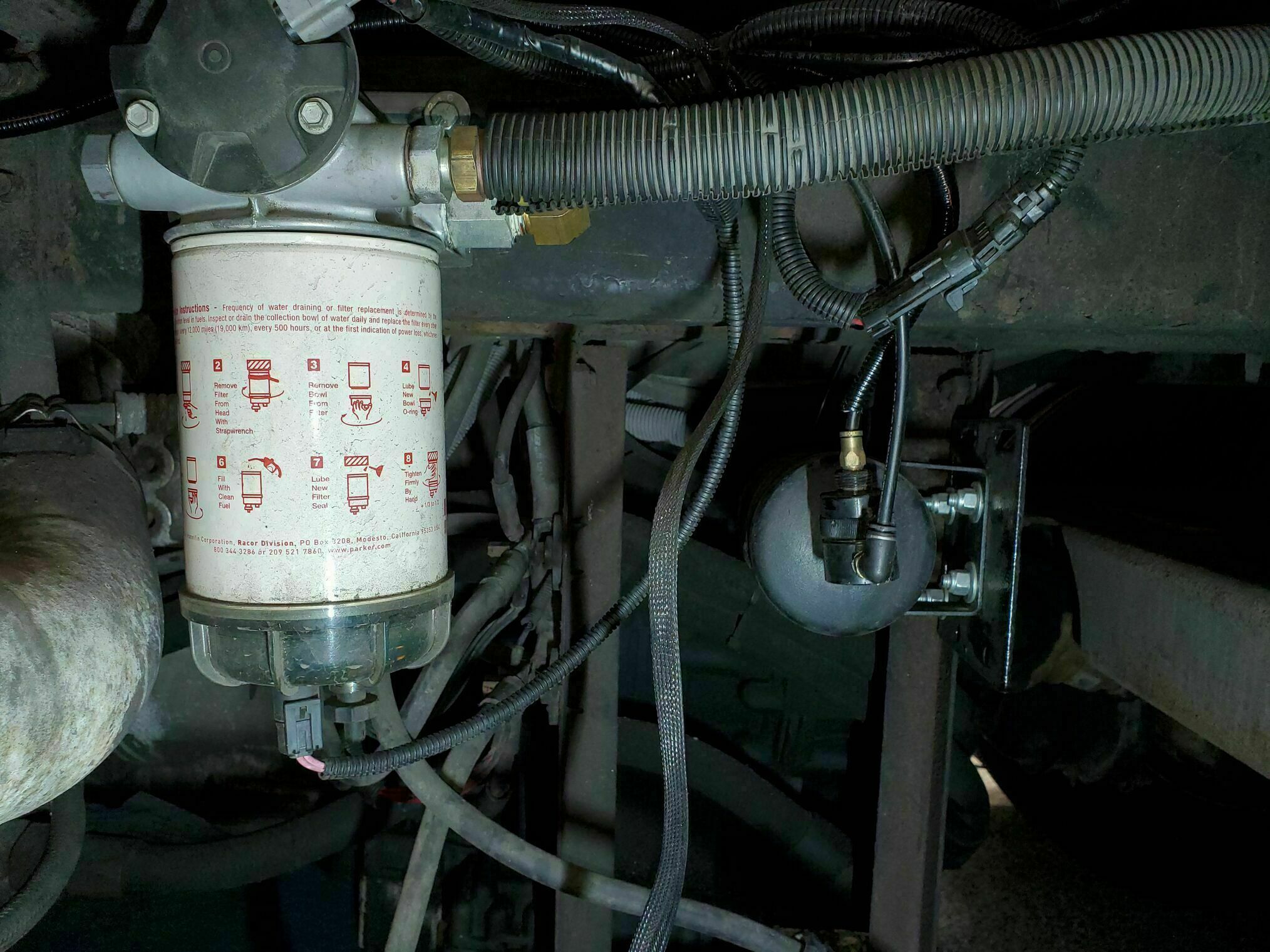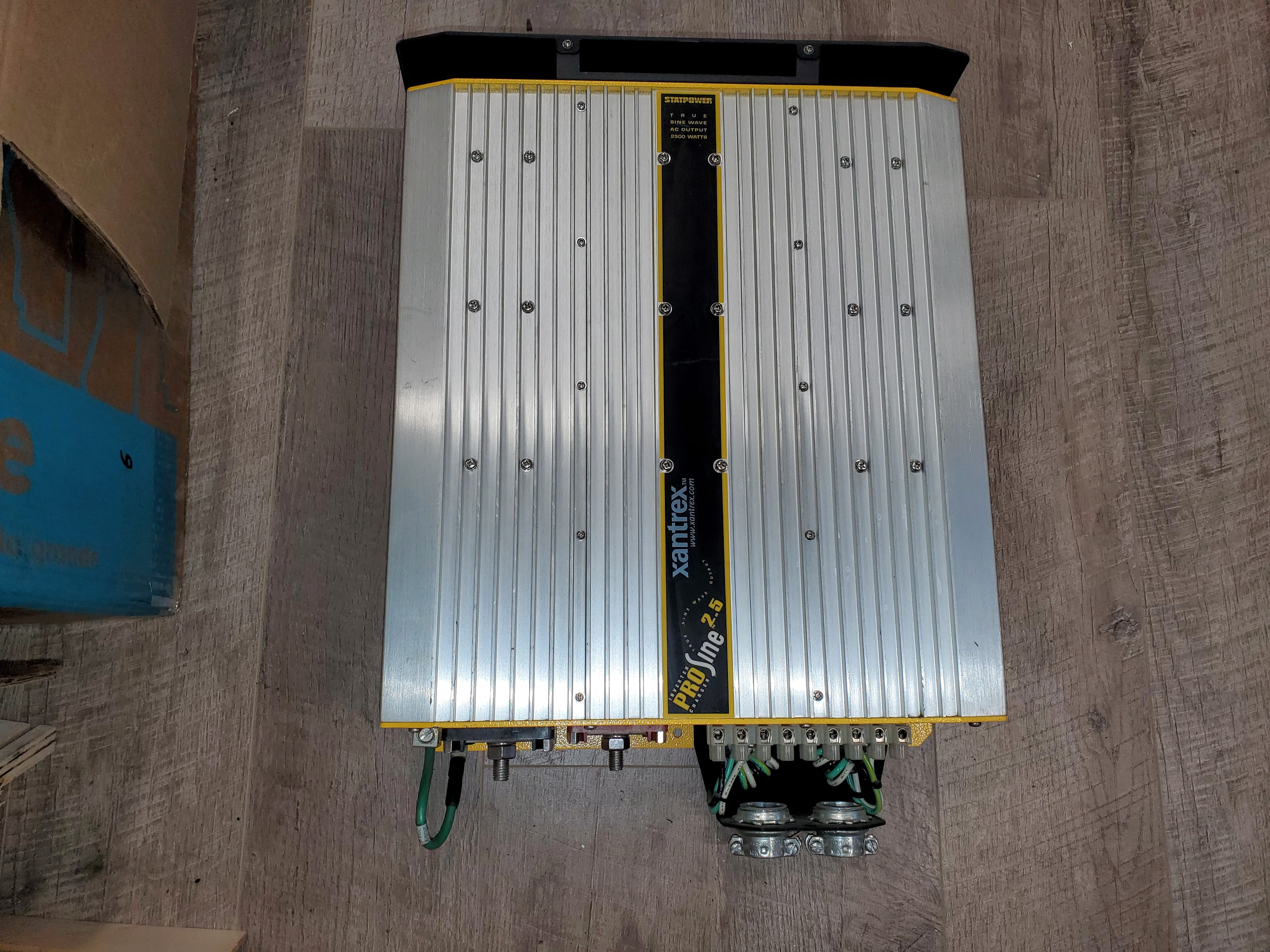Victron Multiplus DC Wiring
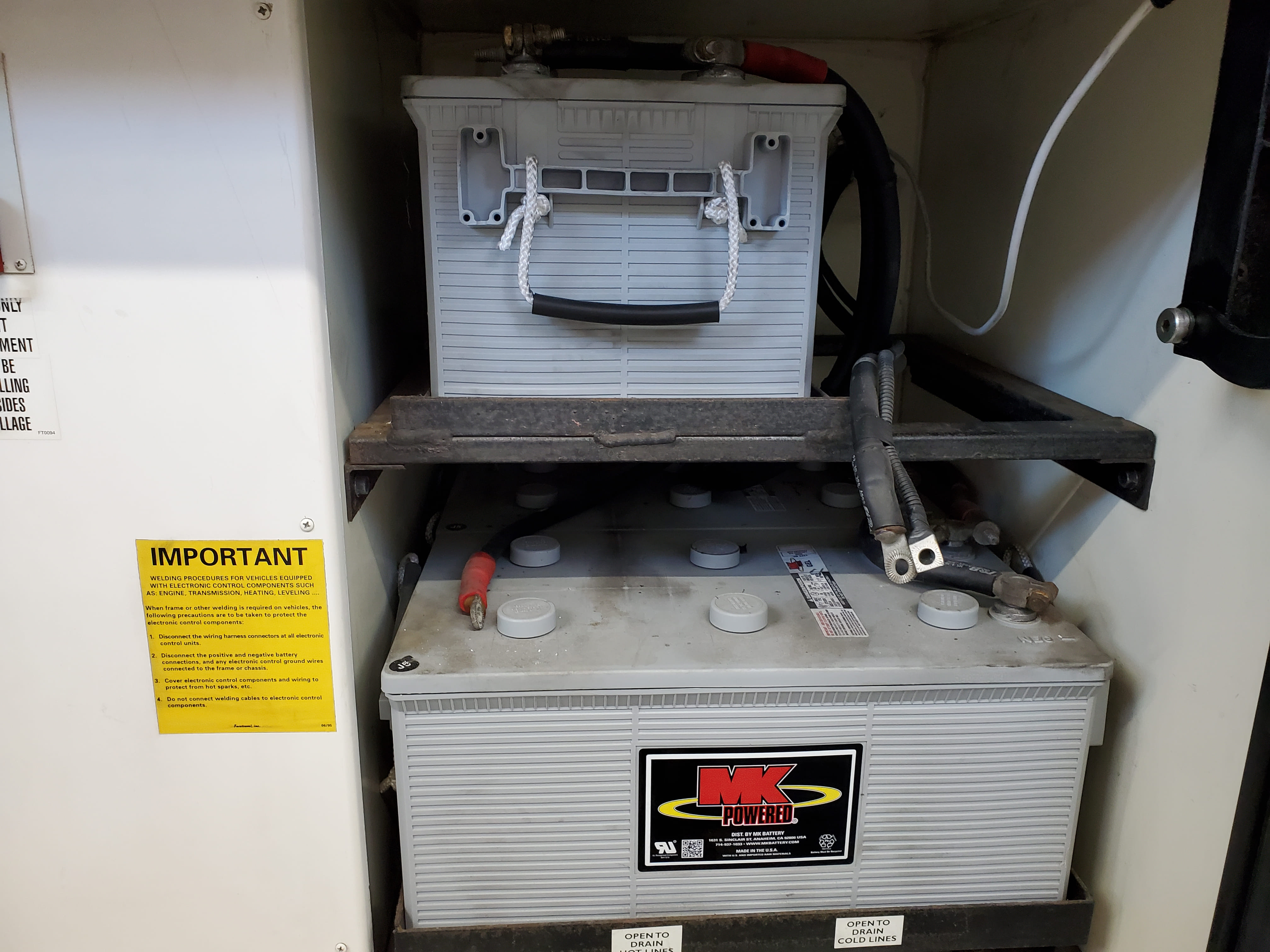
The battery compartment received a major upgrade. Originally, it housed three MK Gel 8D batteries, each rated at 225Ah. While that gave a combined capacity of 675Ah, the recommended safe depth of discharge (DoD) for gel batteries is around 50%, leaving roughly 335Ah of usable power.
Those were replaced with two Epoch LiFePO4 460Ah Essentials, providing a total capacity of 920Ah. Thanks to the chemistry of LiFePO4 batteries, which allow for an 80% DoD, the usable capacity jumps to about 736Ah — more than double the usable energy of the original setup.
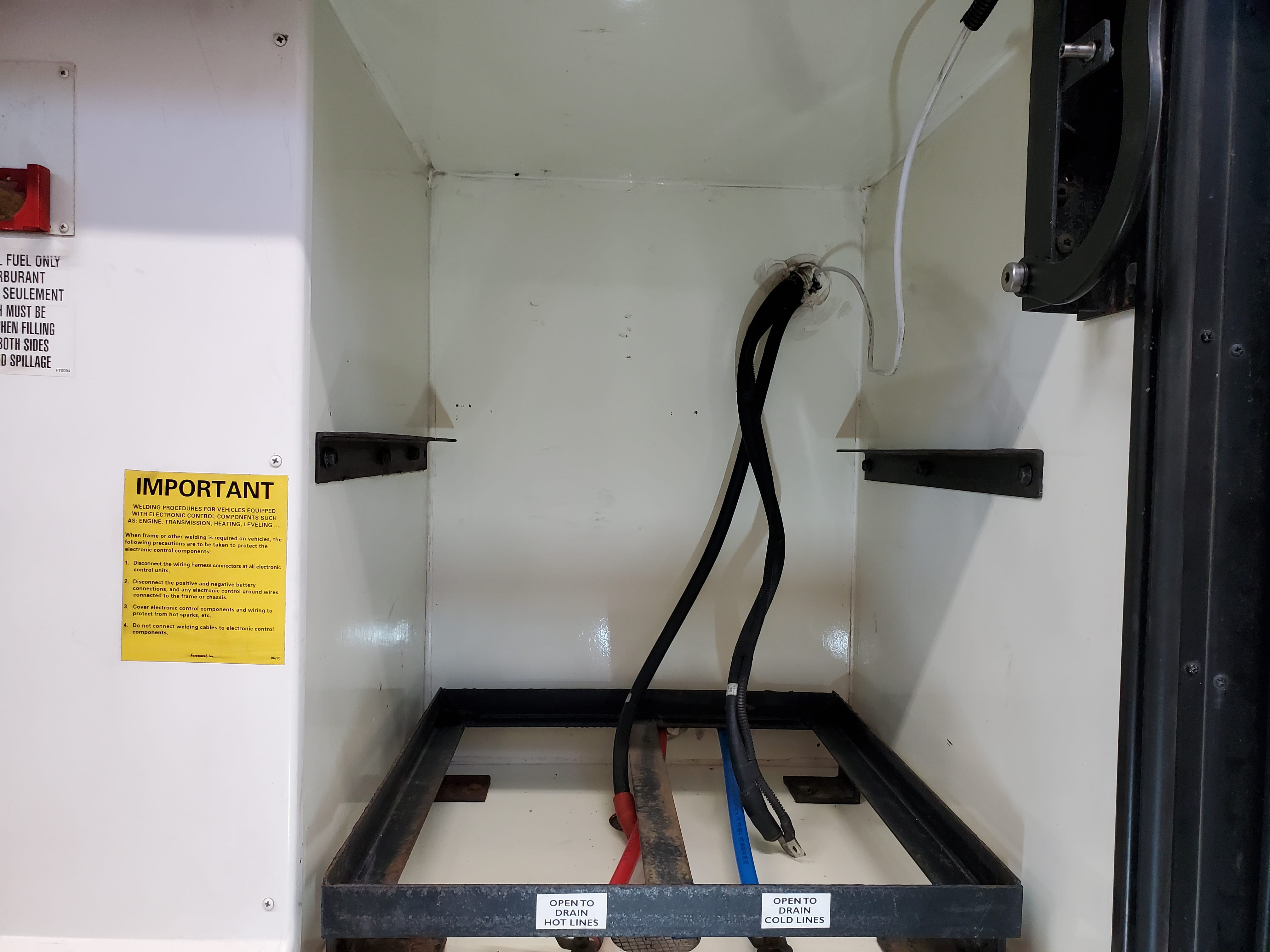
Switching to just two batteries freed up valuable space in the upper section of the bay. That opened the door for a clean installation of the Lynx Distributor, MPPT controller, SmartShunt, Disconnect switch, and Solar breakers — all neatly organized.
The idea for this layout was inspired by @floridarandy Victron Power Thread. Although that thread featured a different setup, it showed that multiple components and the necessary cabling can fit in that space.
Lynx Distributor
Instead of using individual bus bars and fuse holders, we chose the Victron Lynx Distributor. The Lynx serves as a central connection hub, combining bus bars and fuse holders into a single, organized unit. Its enclosed design helps minimize the risk of accidental shorts by keeping fuses and connections safely covered.

During the installation of the 4/0 cable and lugs on the distributor, a few challenges arose. I used marine-rated cable and Sigma lugs, which worked well, but there were some fitment issues.
- The lug tip interfered with the MEGA fuse body. To resolve this, I had to file down the top arc of the lug to create more clearance.
- The small screws on the negative bus bar also caused interference with the 4/0 lugs in certain areas. To address this, I filed small reliefs in the lugs to clear the screws.
- The base of the lug extended into the Lynx’s plastic cable guides. I had to carefully cut small reliefs in the swing arm guide to ensure they wouldn’t be under stress when the lug was tightened.
These adjustments allowed for a secure and functional installation, though some minor modification was necessary for proper fitment. Perhaps another brand of lug would work better.
Lynx Light Hack
The Lynx Distributor has built-in indicator LEDs, designed to show the status of the fuses — they light up when a fuse is blown. However it expects to be connected to a Lynx Smart BMS, which is how the circuit gets its 5V power.
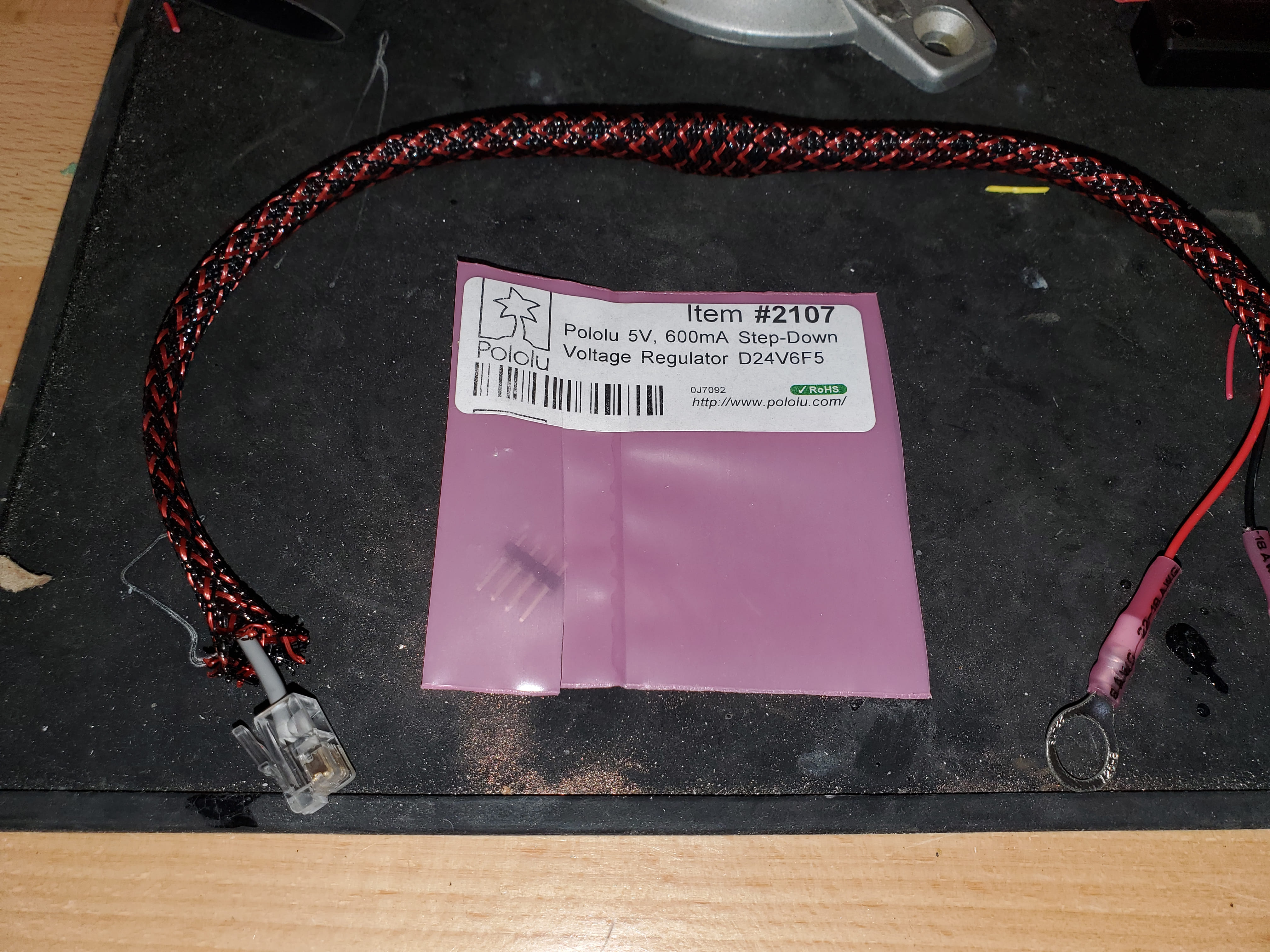
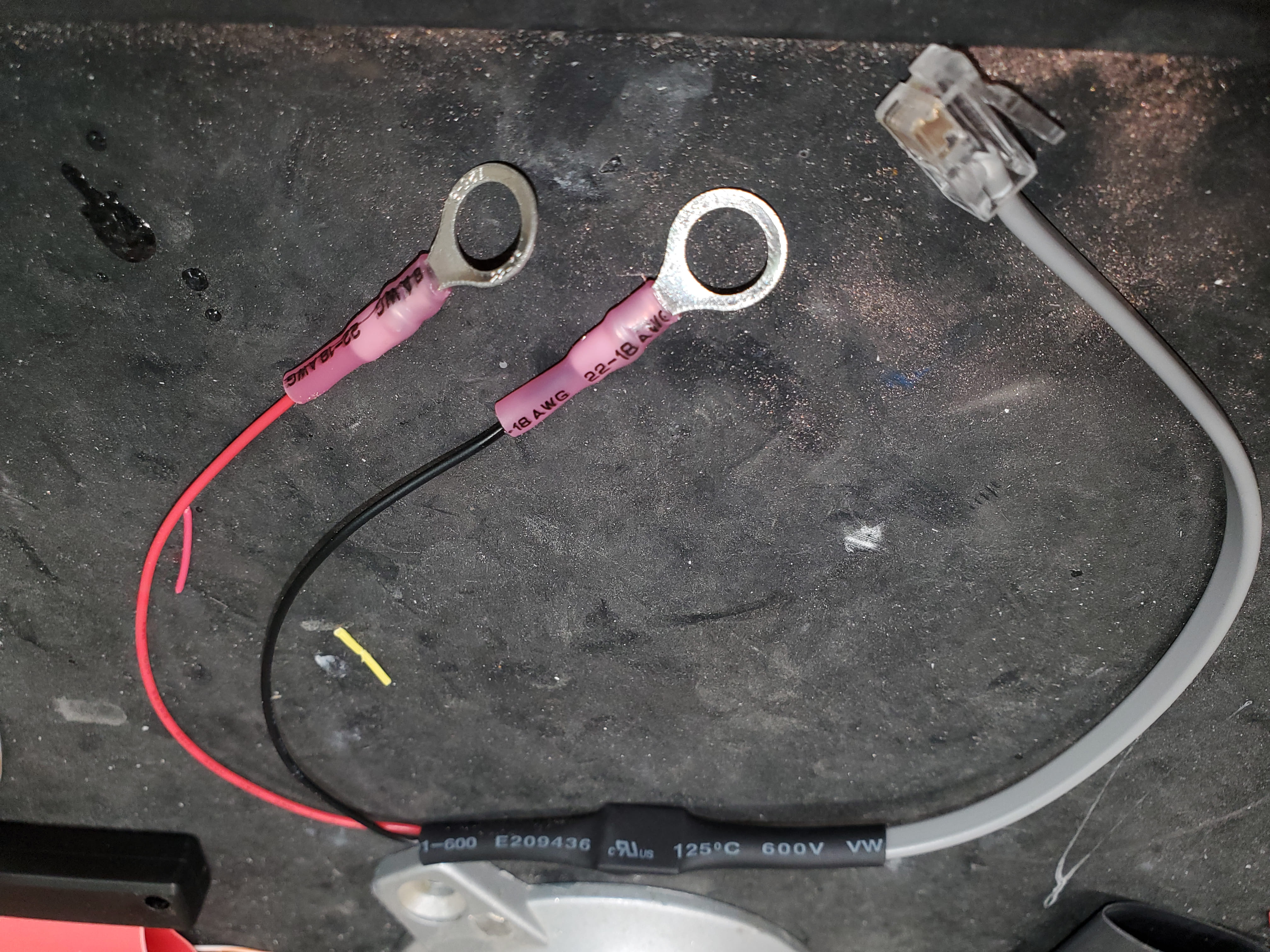
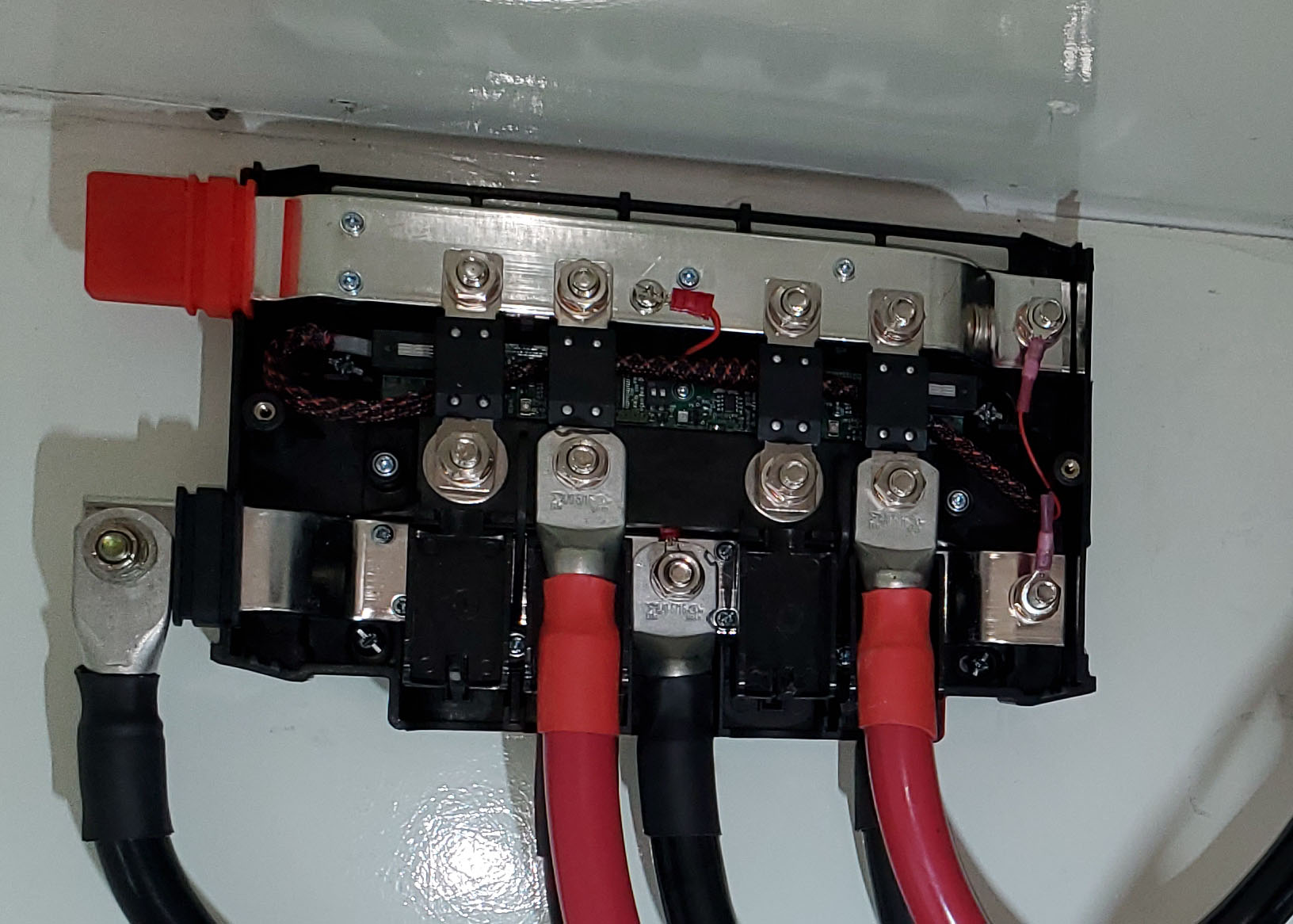
Since I’m not using a Lynx Smart BMS, I needed to supply external power to enable the fuse status LEDs on the Lynx Distributor. I built a simple adapter using a 12V-to-5V Step-Down Regulator, which feeds 5V to the appropriate pins on the RJ10 connector.
Once connected, the Lynx’s fuse monitoring circuit is powered, and the LED indicators will function as intended — even without a Smart BMS. This method is described in Section 3.3 of the Lynx Distributor Manual.
The cable tucks neatly behind the MEGA fuses (see picture) for a clean and secure fit.
The RJ10 connection is not protected against reverse polarity. A wrong RJ10 connection can irreversibly damage the Lynx Distributor’s electronic circuits.
Battery Bank & Distribution
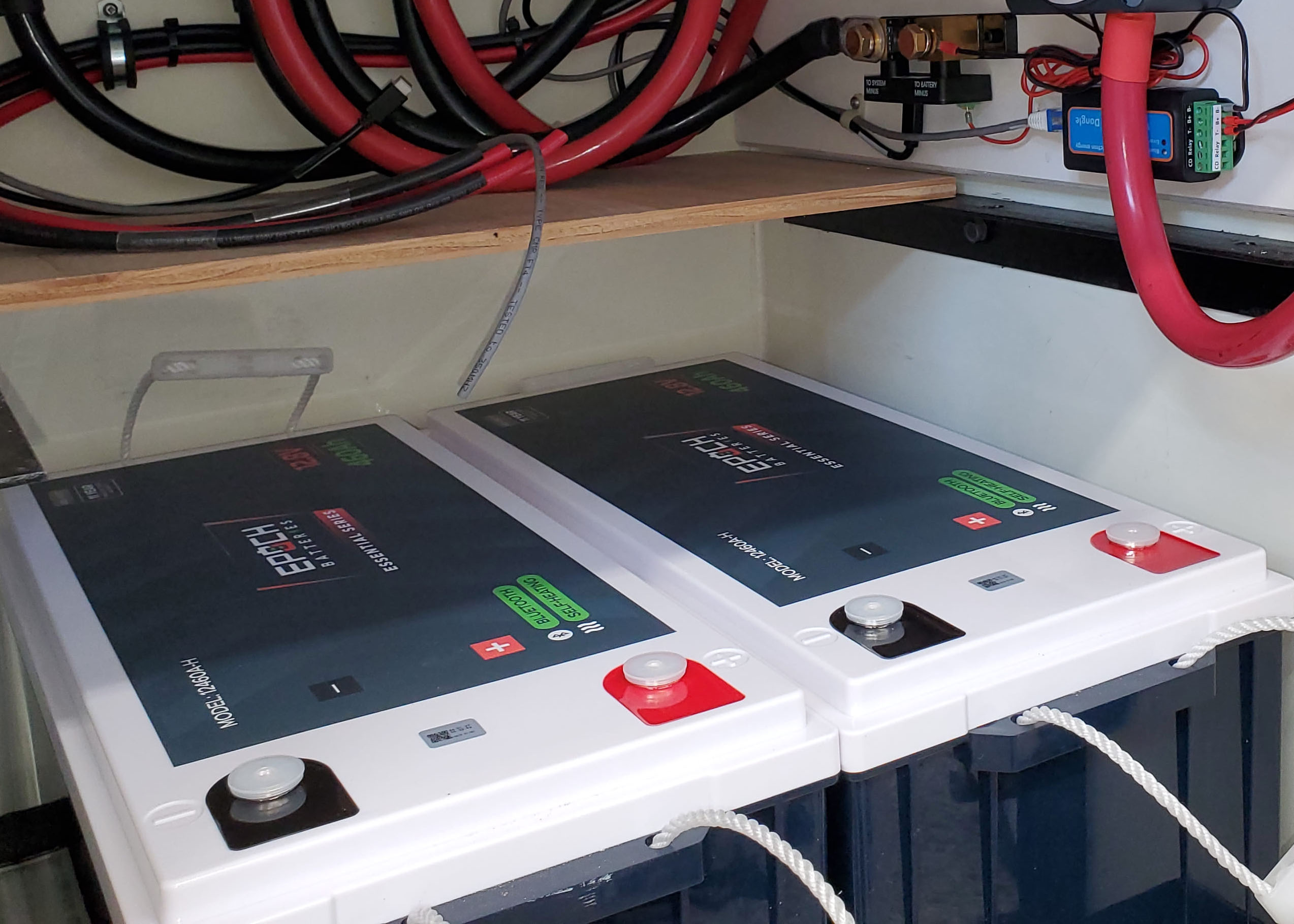
We’re using (2) two 460Ah Epoch Essential deep-cycle batteries wired in parallel. This maintains a 12V architecture while doubling available capacity. On the minus side, a SmartShunt was installed to monitor current and voltage before connecting to the Lynx Distributor. On the plus side, power is routed through a manual battery disconnect before terminating at the Lynx Distributor. The battery lines are also protected by a 400A MEGA fuse.
The original MK Gel batteries weighed about 160 lbs each and didn’t have any brackets or clamps holding them down. I’m guessing the thinking was that they were heavy enough not to move. The new Epoch batteries are around 84 lbs each — basically half the weight of the old Gels. Swapping them out saved us over 300 lbs. Since the new ones are a lot lighter, we added a simple top bar to hold them in place.
From the Lynx Distributor, power is then routed to the [Victron MultiPlus]((/foretravel%20projects/Multiplus-Mount/) inverter/charger, protected by a 400A MEGA fuse. The MultiPlus handles converting 12V DC from the battery bank into 120V AC for household appliances.
Solar Power TBD
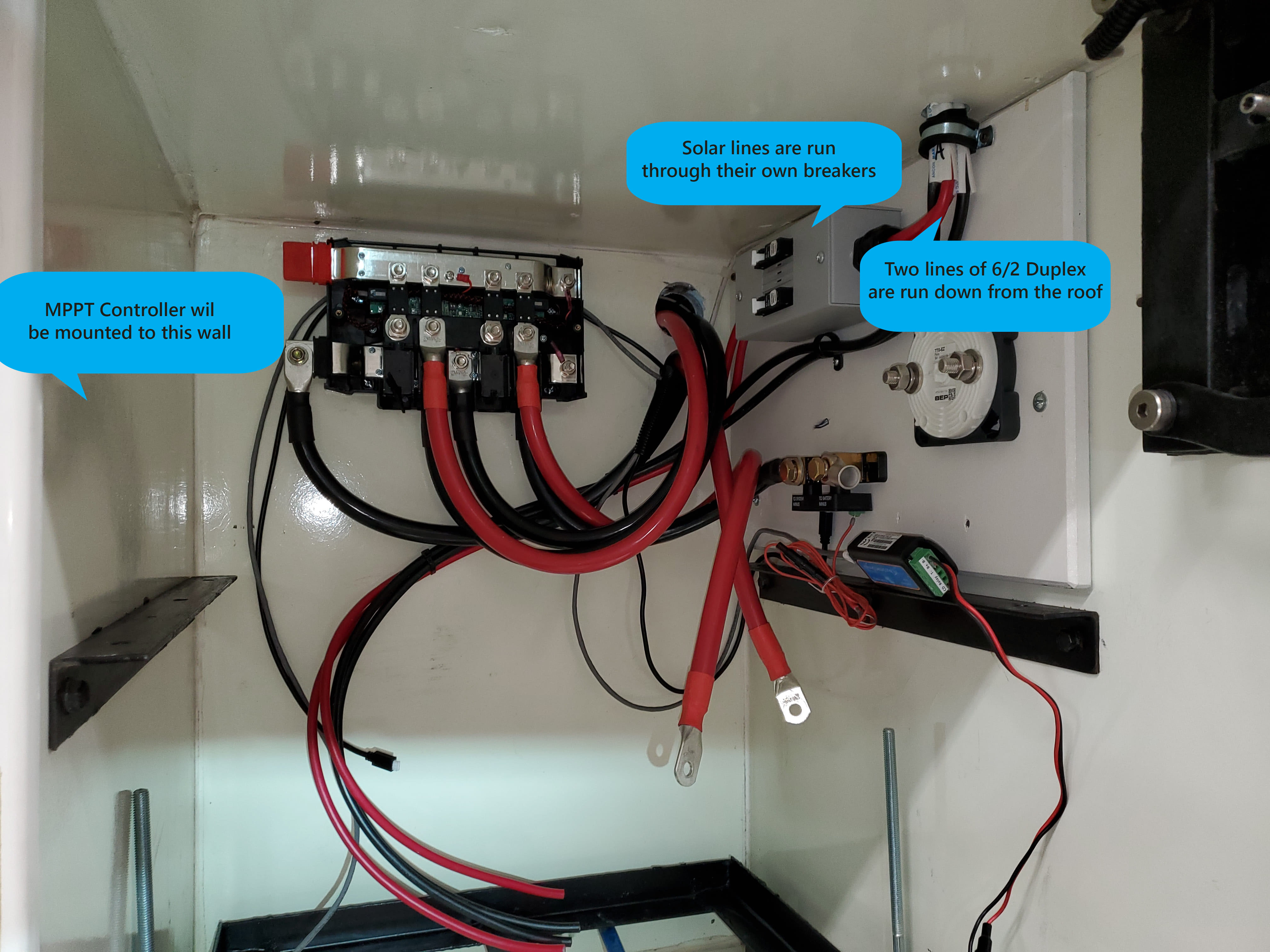
Our system will have a bank of four 220-watt solar panels, wired in series (TBD). Power from the array runs through marine grade duplex 6/2 wire to a Midnite Solar Baby Box, which houses a DIN rail-mounted breaker for protection. From there, the power will flow to a Victron MPPT 100/50 charge controller, which takes solar input and converts it for use on our 12V battery system.
Smart Dongle

A Victron Smart Dongle is installed in the battery bay, connected to the MultiPlus VE.Bus port. The Smart Dongle adds Bluetooth connectivity, allowing monitoring and adjustment of the inverter settings directly from a smartphone.
In addition to wireless access, the Smart Dongle also provides voltage and temperature sensing for the MultiPlus. For temperature monitoring, you can either mount the dongle directly onto a battery using double-sided tape, or connect a dedicated temperature probe (note: this must be the probe designed for the Smart Dongle, not the one supplied with the MultiPlus).
If you do not want the temperature sense function, or intend to use the sensor on the Multiplus, then a great location for the dongle is inside the wire access cover of the multiplus where its easy to wire and its hidden.
Up Next System Monitoring
At the heart of the system is the Victron Cerbo GX, which ties all components together. The Cerbo will provide monitoring and control of the system with a 7” touchscreen. It communicates with the SmartShunt, MultiPlus, Orion and MPPT, giving details on power flow, battery health, and inverter status. Here is how we installed ours


